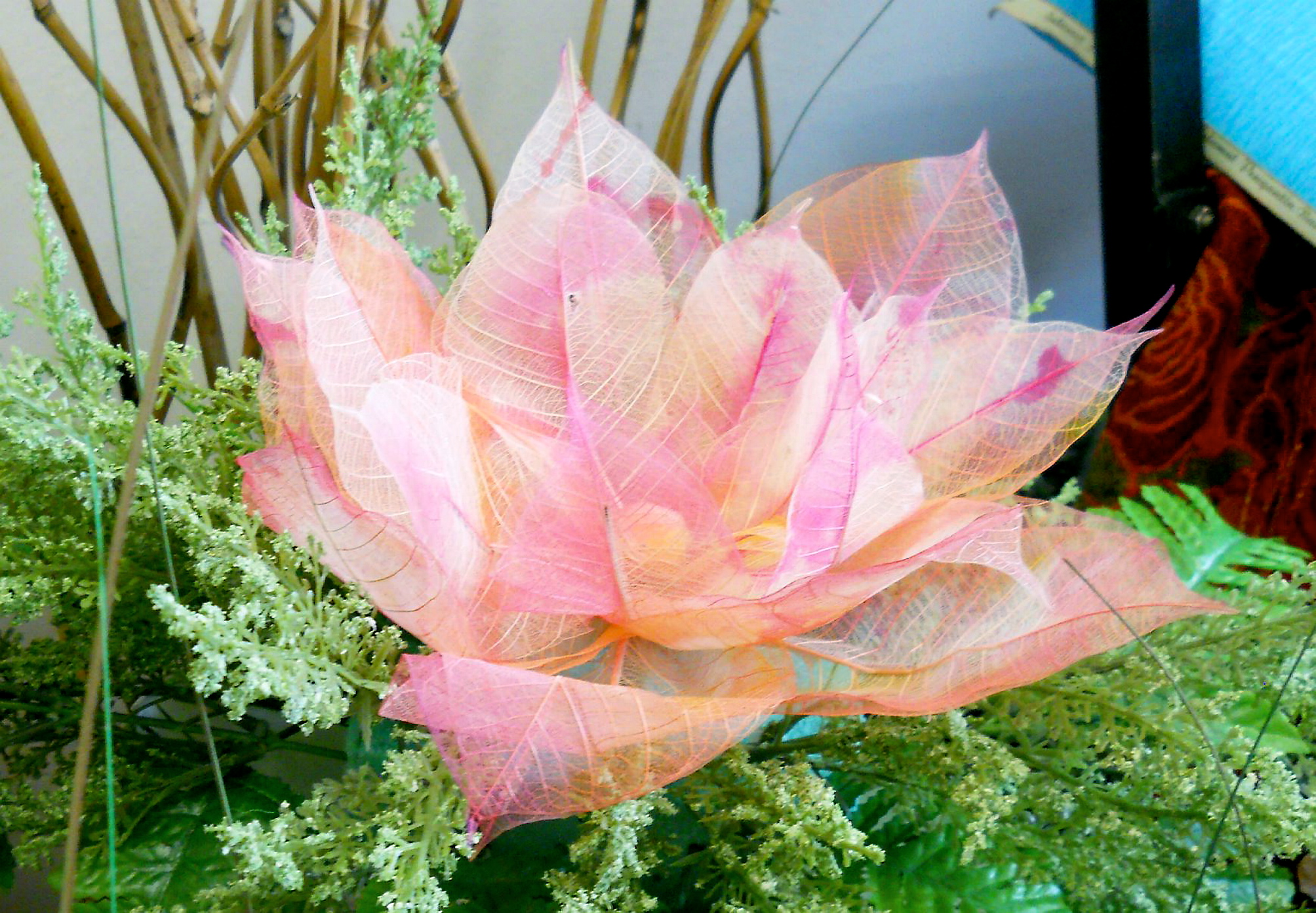ID :
255865
Fri, 09/21/2012 - 07:39
Auther :
Shortlink :
https://www.oananews.org//node/255865
The shortlink copeid
Banyan Leaves Can Be Made 'Decorative' Handicraft

By Nor Ullyana Zaidi
SEREMBAN (Negeri Sembilan), Sept 21 (Bernama) -- Many have heard that dried leaves from rubber trees can be turned into handicrafts like 'decorative flowers', which can be used as souvenirs or even, wedding gifts.
But not many are aware that processed leaves of the banyan tree (also known as ficus tree) can be converted into similar items.
In the skilled hands of craft entrepreneur, Normadiah Sahid, 48, from Labu in the Malaysian state of Negeri Sembilan, the banyan leaves shift form from processed rubber leaves to material which can be turned into decorative flowers.
Meanwhile, dried rubber leaves can be also be turned into beautiful key chains and book markers.
Normadiah attended the basic course in dessicating flowers held by the Agriculture Department and learnt how dessicated rubber leaves were turned into 'flowers'.
UNIQUE
After several years of making flowers from dried rubber leaves, Normadiah attempted to find a replacement and she discovered that dried banyan leaves can be turned into similar items.
"My first experience with banyan leaves was in the Cameron Highlands (Pahang, Malaysia)," she said, adding that the items made from banyan leaves are larger and appear more unique than the handicraft products made from rubber leaves.
"The banyan leaf is heart-shaped and has a resemblance to the stingray fish and these are the features that attract more attention. Compared to rubber leaves, the process of turning banyan leaves into decorative items is much simpler.
"Replicas of roses made from dried banyan leaves turn out to be more beautiful, as compared to those made from rubber leaves and replicas of other flowers with big petals like the sunflower can also be made," she said.
DESSICATING
She said that the banyan leaves need to be soaked in water for at least one month in order to remove the 'green (chlorophyll)' part, leaving only the 'skeleton'.
"When only the skeleton is left on each leaf, the leaves are rinsed and a bleaching agent needs to be added to remove the smell," she explained.
She said that the next step is to soak the skeleton of the leaves in water mixed with bleaching agent for two hours until the leaves became whitish. The leaves need to be rinsed many times before being left to dry.
The final stage is spraying the dried leaves with various colours, before turning them into flowers and other items.
RESPONSE
Normadiah who has 15 years experience in handicraft-making, also makes handicraft items from other materials like the skin of mangosteen and pumpkin.
"Most of the products came from my own enterprise. Many of the orders were made for wedding functions, as well as for gift items for government agencies like the tourism and agriculture departments.
"Products such as book markers are available in book shops in Kuala Lumpur and Botany Park, Putrajaya (Malaysia)," said Normadiah, who operates a handicraft outlet in Seremban 2 shopping complex here.
One of the orders received by Normadiah was for 30,000 book markers for Tourism Malaysia for the Visit Malaysia Year 2006 and Malaysia's 50th anniversary of Independence in 2007. (photoBERNAMA)
MALAYSIA





